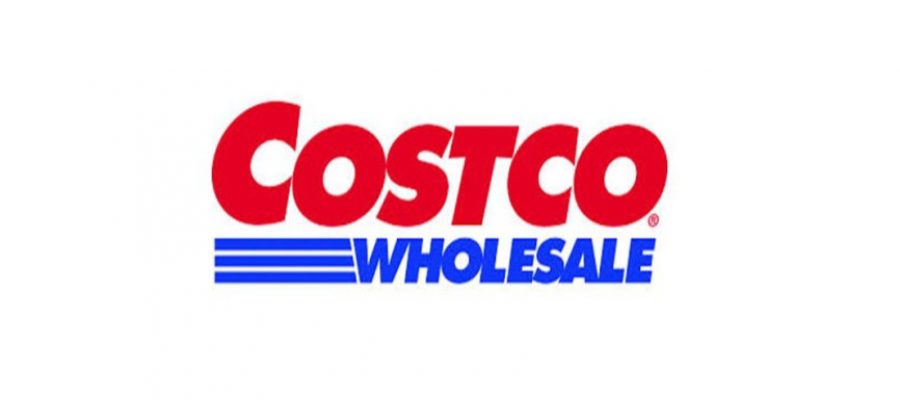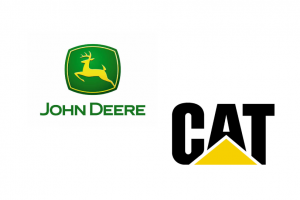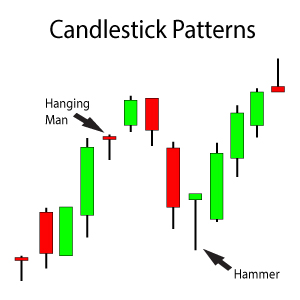This is a Costco (COST) stock chart review. This was a request from a Trendy Stock Charts member. Requesting a stock analysis on any publicly traded company is one of the benefits of a Trendy Stock Charts membership.
If you are not familiar with Costco (COST), it is a “big box, low cost retailer”, similar to Walmart (WMT).
Costco (COST) Stock Chart Review
This first chart for Costco (COST) is a 10 year monthly candlestick chart. It captures a long-term uptrend that has been in place over that time period.
Most importantly though, I’ve pointed out a Bearish Engulfing candlestick pattern on the chart. That is the main reason I started with this 10 year monthly chart. This Bearish Engulfing candlestick pattern does not signal “higher prices ahead”. Rather, it is quite the opposite.
With the amount of selling volume associated with th bearish signal, COST’s share price appears to be starting or about to start a lengthy correction process.
With a 10 year main supporting trendline around the $140 area, it appears that a little more patience is required before any scale-in purchase should be made. Purchasing shares to go long while the MACD Histogram is showing increasing selling momentum is not a sound investment or trading strategy.
I’ve identified 3 potential scale-in support areas to purchase shares for Costco (COST). Let’s see if some shorter-term perspectives will help provide any insight as to which support area may be best to start the scale-in process to go long.
COST – Shorter-Term Review
This next chart is a 1 year monthly candlestick chart for Costco (COST). I wanted to dive in and look at shorter-term support areas since COST’s share price has flashed signs of a potential consolidation period.[s2If !current_user_can(access_s2member_level1)]……
If you want to continue reading this Costco (COST) stock chart review, you must first login.
Support areas for Costco’s share price are analyzed. These support levels can be used as buying areas to purchase shares and go long the stock. Longer-term trends and short-term term chart signals are also reviewed.
If you are not a Trendy Stock Charts member, consider joining today! There are several different subscription plans available.[/s2If][s2If current_user_can(access_s2member_level1)]
The Falling Window candlestick pattern on the daily chart is ugly. But the thing that strikes me as odd is that it took place a couple of weeks after earnings. There must have been some major news event triggering the sell-off. Maybe that was around the date that Amazon announced it was purchasing Whole Foods Market. I would have to check the dates though to be more certain but that seems about right…

Analyzing Shorter-Term Support and Resistance Areas for Costco (COST) Including Key Areas to Watch & Monitor
Let’s review items I like about this chart, items I don’t like about the chart and then things to watch for on the chart.
Things I Like
Here is the list of things I like about the 1 year daily candlestick chart:
- The MACD Histogram is showing buying momentum that is increasing right as COST’s share price is looking for support from the Rising Window candlestick pattern
Things I Don’t Like
Here is the list of things I don’t like about the 1 year daily candlestick chart:
- In order for COST’s share price to pullback to its main supporting trendline of 10 years on its weekly chart, that would require COST to break through its support area from the Rising Window candlestick pattern
- I Googled it – the Falling Window candlestick pattern developed on June 16, the day Amazon announced they were acquiring Whole Foods
- Amazon is the retail killer right now; millenials love Amazon
Things to Watch For
Here is the list of things to watch for on the above 1 year daily candlestick chart:
- If the Rising Window candlestick pattern’s “window is closed”, then the chances of the $135.11 support area holding diminish considerably, especially if the window is closed with above average selling volume
- Closing a window is the same as closing a gap
- Wait until the bottom of $150 from July 21 is re-tested; if the $150 bottom holds, then a scale-in purchase could be warranted
COST – Point & Figure
A Point & Figure chart can help provide for a price objective if you have difficulty with other methods. I anticipate beefing up the P&F member section in the next couple weeks to assist with this type of analysis.
This is a Closing P&F Chart for COST. It shows a bearish price objective of $121.
I only illustrated the Closing P&F Chart above for Costco. However the High/Low P&F Chart reflects a very similar but slightly lower price objective of $117.
Both the Closing and the High/Low P&F Charts indicate to look for scale-in opportunity #2.
COST – Moving Averages
This last chart for Costco (COST) is a 2 year daily candlestick chart to analyze its share price activity from a Moving Average perspective. I typically use a 1 year chart for moving averages but wanted to include more time for COST’s review.
As you can see, COST’s share price has seen a lot of volatility by flipping between Death Crosses and Golden Crosses over the last 2 years. The Golden Cross trade set-up that I often refer to works well after the stock has been in a long correction or downtrend. That is not the case for COST’s share price.
Any push upwards back towards the 200 Day or the 50 Day moving averages should be seen as opportunities to trim shares if you are currently long.
The only way to stay long shares of COST would be if its share price breaks back through both the 50 and 200 Day moving averages on tremendously high buying volume. I am talking about a volume spike in the 10 – 15 million range. Any less buying volume on a rebound towards the 50 or 200 Day moving averages is the opportunity to trim shares as I mentioned.
Costco (COST) Stock Chart Summary
Well, I couldn’t resist. I Googled Amazon’s announcement for acquiring Whole Foods. The date was June 16, the date of the Falling Window candlestick pattern on the daily chart above.
Based on the accumulated evidence above, the best scale-in areas seem to be #2 and #3, especially for the longer-term investor. Traders may find a bounce in the scale-in #1 area that they wish to trade, but that is not something I typically recommend either.
The only times I feel comfortable trading bounces is when the stock has the “potential” to keep going. Based on the bearish signals for Costco (COST), it does not seem like potential at this point. Stay patient and look for an entry to go long at lower prices.
Good luck trading!
[/s2If]

















Ask a Question. Make a Comment. Leave a Reply.